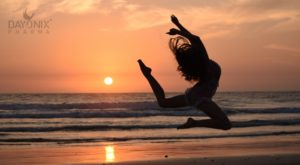Dance, a Doorway to the Soul! Take Best Supplements to Dance Happily…

What is Dance/Movement Therapy?
Dance/movement therapy (DMT) in USA/ Australia or dance movement psychotherapy (DMP) in the UK is defined as the psychotherapeutic use of movement and dance to improve intellectual, emotional, social, cognitive and motor functions of the individuals’ body.
Dance can be both an outlet for creativity and a method of accessing a peaceful state of mind!
As a form of expressive therapy, there is no single fixed type of movement style used within this approach. Programs range from traditional dances like ballroom to more subtle forms of movement like yoga and stretching to calm the body. Through therapeutic sessions, a DMT licensed practitioner will use movement to help a client achieve desired goals. The benefits of best supplements such as Neuroben to reduce stress and manage mood are deniable.
How dance therapy is different from regular dancing?
Movement in a dance therapy setting is more than just exercise. It includes body language, nonverbal behaviors and emotional expressions to communicate conscious and unconscious feelings of the client.
Movement is the primary way dance therapists observe, evaluate, and put therapeutic interventions into practice.
Advantages of Dance Therapy
DMT is a therapeutic form of exercise which involves the use of dance and body movement not only for physical health but also mental and emotional wellbeing.
There are numerous benefits and advantages to dance therapy through encouraging self-expression. Although research on dance therapy’s health effects is rather limited, here’s four key study findings:
Relieves stress
Since dance and movement can be related to thoughts and feelings, it can bring changes to emotions and attitudes immediately.
Hearing a music during dance sessions can create a sensation in our bodies that affect our mood and also relieve stress as it increases endorphins secretion in the brain.
Improves confidence and self-esteem
Dance Therapy classes create a positive and safe learning environment and let the individuals know they are welcome and that this will be a pleasant and fun experience. Maintaining a positive, reassuring, and encouraging environment is key to promoting confidence, self-esteem, social and communication skills and attentiveness.
Helps Parkinson’s patients
In people with Parkinson’s disease, dance therapy helps to improve balance, endurance, and gait function.
Dance significantly improved motor scores on the Unified Parkinson’s disease rating scale (UPDRS), balance, and gait speed compared to no intervention. Compared to exercise, dance improved balance and quality of life.
Longer-term studies are needed to see if any of the benefits seen in studies are lasting. Although further research is needed to rate its positive effects, certain types of dance therapy may meet the requirements of exercise programs for people with Parkinson’s disease.
Improves cancer-related fatigue
A study of forty people undergoing cancer treatment with moderate to severe fatigue suggests that dance therapy may help to improve cancer-related fatigue, emotional and social functioning, and physical performance compared to those who received standard care and counseling.
Remember…
Before considering dance therapy programs, it’s necessary to consult with your doctor and to work with qualified dance therapists. People with cancer, arthritis, and heart disease may need to take certain precautions when using dance therapy.
Dayonix Pharma/ August, 2019
The content of this blog is not intended to be a substitute for professional medical advice, diagnosis, or treatment. Always seek the advice of your physician or other qualified health professional regarding any medical condition. While every care is taken to ensure the accuracy of the information presented in the blog and to describe best generally accepted current practices we cannot accept any liability for errors or omissions or for any consequences from application of the information given.

